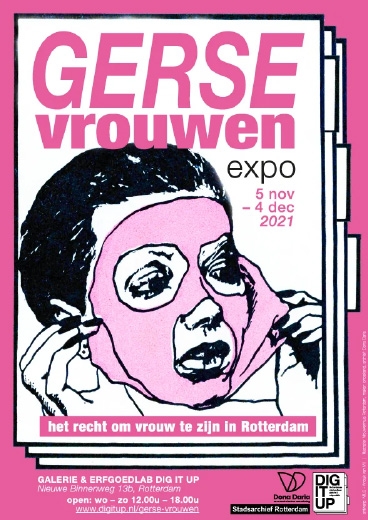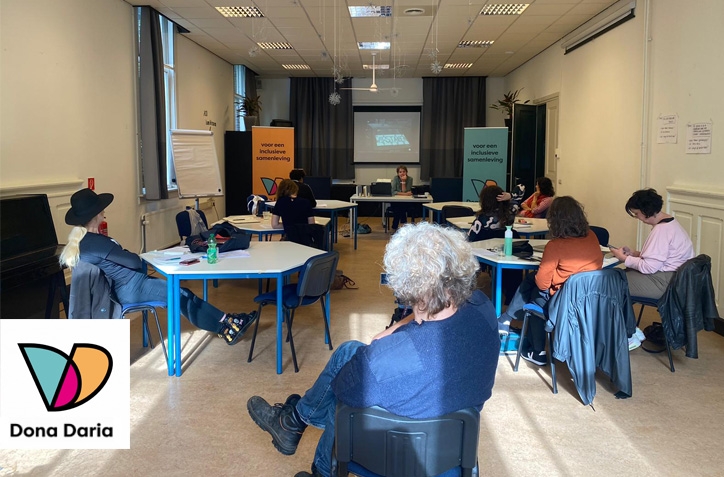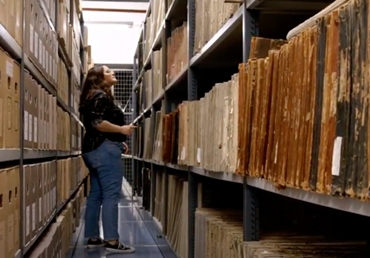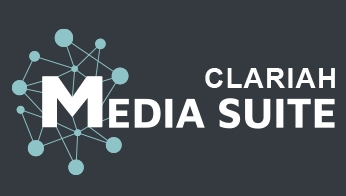The Project
Oral history, often used by communities whose historical experiences have left few textual or material traces, plays a crucial role in uncovering hidden voices and contributes to a more balanced and nuanced perspective on our history. Oral history is a popular method for grassroots initiatives to explore community histories which would otherwise go unnoticed in public archival institutions, but their material is not routinely stored or curated after projects end – often due to a lack of awareness of the possibilities of data reuse, or due to a lack of digital skills to deposit the oral histories as data in archives and repositories.


Working with several partners – grassroots organisation Dona Daria and cultural foundation DIG IT UP, as well as GeschiedenisLab, Stadsarchief Rotterdam, (Data Archiving and Networked Services) and CLARIAH-NL (Common Lab Resarch Infrastructure for the Arts and Humanities), the project is working with community history project ‘Gerse Vrouwen’, in order to develop a system to systematically digitise, curate and archive material in openly accessible archives and research repositories. In this way, Stories in Motion will make these oral histories accessible as sustainable data, substantially extending their potential impact within research, education, and the community more widely.
Goals and Processes
The project’s aim is to design a ‘story cycle model’, a workflow template that can be reused by heritage associations for future projects. Based on a case study, volunteers receive training in interview collection and GDPR, digital skills for data enrichment, as well as for digital archiving and reuse. Supported by several workshops, the project’s collaboration partners and their volunteers are working together to co-create the story cycle model.

Building on Karrouche’s experience with the digitisation of a previous oral history project, entitled ‘Ziel van de Wederopbouw’, which is already partly accessible via the CLARIAH Media Suite, it was possible to identify in advance what the likely issues might be: ‘Before you even start your oral history project, you need to make some decisions. That’s often what doesn’t happen. So by working with an existing collection, we could identify the exact points in time when things went wrong, or what the problems are that obstruct the storage and digitisation of these oral history collections.’

One of the most important things, it emerged, is making informed consent forms part of the process, which was not routinely done in the past.
Heritage associations are now looking for ways in which they can improve their practice. In addition to making their collections available as sustainable data, the new skills and processes have affected the way they view their role. Karrouche says: ‘It’s interesting to see how people start to view themselves as co-creators of historical sources, which comes with a sense of responsibility and ownership of one’s past.’
Once the oral histories have been collected, digitised, transcribed, and meta-data has been added, the data will be made accessible through standards for data interoperability, enabling reuse and comparison. The data will be deposited at -EASY, a repository for research data. DANS-EASY has an agreement with CLARIAH, and so the oral history collections become useable and findable in the infrastructure’s Media Suite.
Discover the CLARIAH Mediasuite:
Discover the CLARIAH Mediasuite:

Output and Results
The project, which began this year, will continue until the summer of 2022, with a symposium and a ‘live magazine’ to showcase the story cycle model as its closing events. The ‘live magazine’ will communicate the project’s results to an audience of grassroots initiatives, cultural organisations, policymakers and cultural entrepreneurs, highlighting the fact that collaborating on historical projects should be seen as an important part of what it means to belong to a community.
By making immaterial traces from the past tangible as sustainable and reusable data for a wide audience, Stories in Motion generates knowledge on important societal issues in urban settings, such as identity, diversity and inequality. In this way, heritage associations can have a wider impact, too: in addition to working on community-building, neighbourhood safety, or intergenerational exchange, oral history made accessible in this way could also have an impact on research, education as well as, perhaps, policy-making.
The project has involved the collaboration of many different organisations, which often hold very different views and approaches. Although challenging at times, the work has been productive. Karrouche says: ‘What is special about this project is that these two types of oral history – scholarly and grassroots associations – are gradually approaching each other and are open to learning from each other.’ Indeed, in recognition of this cooperation, DIG IT UP has been identified as an example of good practice for Cultural Heritage in Action, one of the actions of the European Framework for Action on Cultural Heritage of the European Commission.
Role of CLARIN
‘For CLARIAH, it’s such a practical, concrete way to be relevant in society. You are making a small difference, ensuring that as a large digital infrastructure you don’t silence particular voices, because that’s the exact opposite of what you want. But it’s one of the risks. If you’re not careful, then it will become difficult to honour these types of voices or connections in a larger infrastructure.’ Norah Karrouche
‘We want to make sure that the oral archives that are collected are stored and deposited at different types of institutions so that these oral histories can be made available for different types of audiences. Our story cycle model is intended to design a workflow that organisations like DIG IT UP can use to make the data that they collect, the oral histories that they collect, available for a very diverse audience, so that these oral histories can be reused by citizens themselves, but also by researchers, lecturers, teachers and journalists – through a research infrastructure like CLARIAH.’ Norah Karrouche
Norah Karrouche, Assistant Professor, Department of History, Vrije Universiteit Amsterdam and Senior researcher, Erasmus School of History, Culture and Communication Department of History, Erasmus University Rotterdam (project lead)
Arno van der Hoeven, Assistant Professor in the department of Media & Communication at Erasmus University Rotterdam (until 1 November 2021)
Marjan Beijering, Independent Historian, Geschiedenislab (from 1 November 2021)
Simone de Silva, Director, DIG IT UP
Marie-Claire Dangerfield, Information Specialist, Stadsarchief Rotterdam